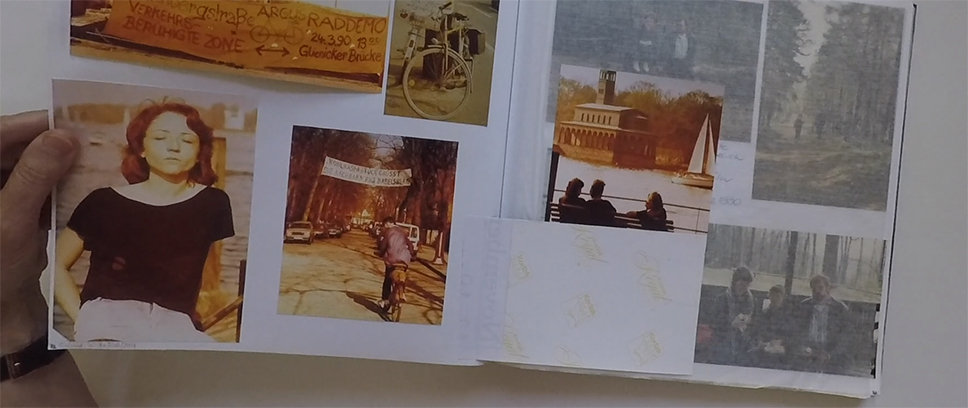
East Germany between 1980 and 2000 in Private Photo Albums
Friedrich Tietjen | 16 December 2021
Since the summer of 2020, the project “Biography and History. Private Photography in East Germany, 1980–2000” of the Reinbeckhallen Foundation in cooperation with the DHM has been studying by whom, how and why photographs were taken in these two decades in East Germany, primarily for personal use. In the course of the project, which is supported by the Federal Foundation for the Reappraisal of the SED Dictatorship, dozens of interviews were conducted and hundreds of albums examined. In this article the photography historian Friedrich Tietjen sketches some of the issues and results of the project.
“Then in the summer we were in the Soviet Union for two weeks, holidays at Olya and Sergei’s place, and we come back and the people are standing in Prague in the embassy and they want to leave this country. And we thought, oh God, what’s happening … and nevertheless the celebrations went on.”
The paradox that Frau G. formulated so casually in a conversation with us in the summer of 2020 pervades the album we were leafing through while we talked – pictures of the vacation in 1989 are mounted on the pages, showing cheerful garden parties, bicycle tours, visits from or to relatives. The fact that first the Berlin Wall had just fallen and then the GDR went down in a long drawn-out agony is suggested in hardly more than a few details and individual pictures in between – two women reading the magazine Sputnik together, a cigarette ad pasted in the album, the make of a car on the roadside during the first excursion to West Berlin, and a banner stretching across the street between two trees: “Kohlhasenbruck greets the neighbours from Babelsberg”.
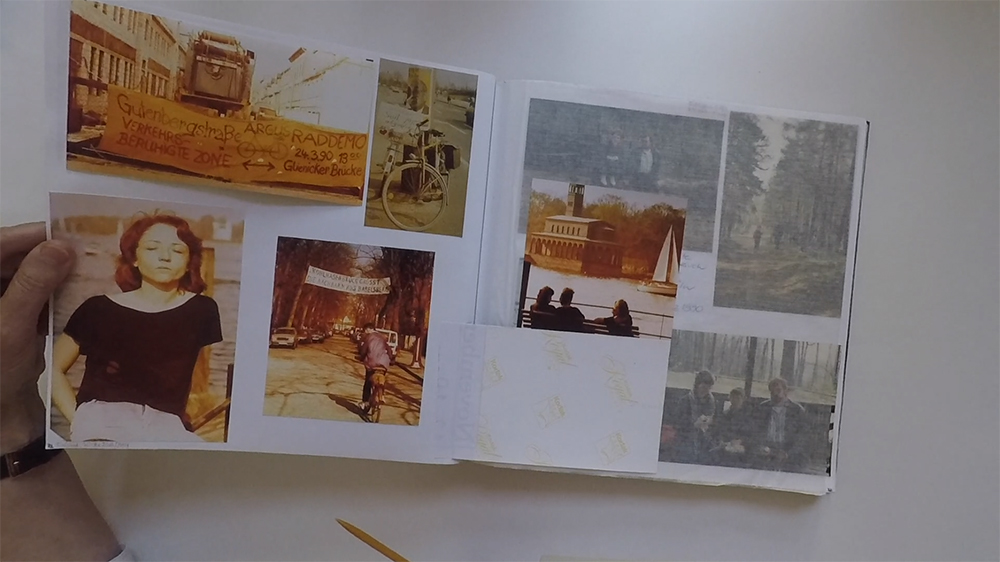
It is astonishing how little the historical events of 1989/90 are reflected in Frau G.’s albums – and yet compared to others a whole lot. In many other photo collections the dramatic changes have left ever fewer traces, although at the time the events were so close, present and far-reaching. The pictures of the demonstrations in the big cities, the people joyfully celebrating on the Berlin Wall, the “Wallpeckers”, later the Trabis abandoned on the side of the street, the crumbling industrial buildings, and the hostels of the contract workers that were set afire in Rostock and elsewhere: they have entered the collective visual memory and stand for the historic caesura of 1989/90 and the consequences which have lasted until this day. Yet the production of images for private use was evidently oriented on other motifs.
Instead of following the political and public events, private photographs generally stayed within the familiar, domestic realm; instead of focusing on the disruptions that even affected individual biographies, they stress the continuities; instead of showing a life that is constantly changing on an almost daily basis, they present the most pleasant images of this everyday life, the vacations, the parties, the children. The photography in the private East German albums in the years between 1980 and 2000 thus offers a different perspective on the end of the GDR and the transition of the country into a united Federal Republic than we find in the photojournalistic event photography that has long since illustrated the history books. The private photography represents these two decades not as much as an abrupt turnover than as a transition that was noticeable long before 1989 and could be felt far into the 1990s.
We found clues to this rather gradual change not only in what the photographic images themselves show, but also in the actual practice of photographing in a more general sense. A former animal keeper at the GDR state circus told us how he was able to buy a compact camera during a tour through Japan in the mid-1980s which had a number of features that no camera that was produced in the GDR had to offer. Several people we spoke with explained why music magazines from West Germany were photographed page by page and the copies secretly passed around or sold in the schools and at local black markets, and in some cases there was an active exchange of pictures of relatives between East and West Germany. Instead of immediately travelling to London, Paris or Majorca right after the fall of the Wall, as the cliché would suggest, many families continued to spend their holidays on the Baltic Sea or the Black Sea coast. Amateur photographers reorganised their photo club after their club and the company which had sponsored it had been closed down, and in some conversations we learned of different kinds of semi-private media that had almost no counterpart in West Germany and had been carefully archived by individual persons – brigade books, for example, wall newspapers from “Plattenbau” tenements, or school-class albums that had been put together through an initiative of the parents and carried on over several years.
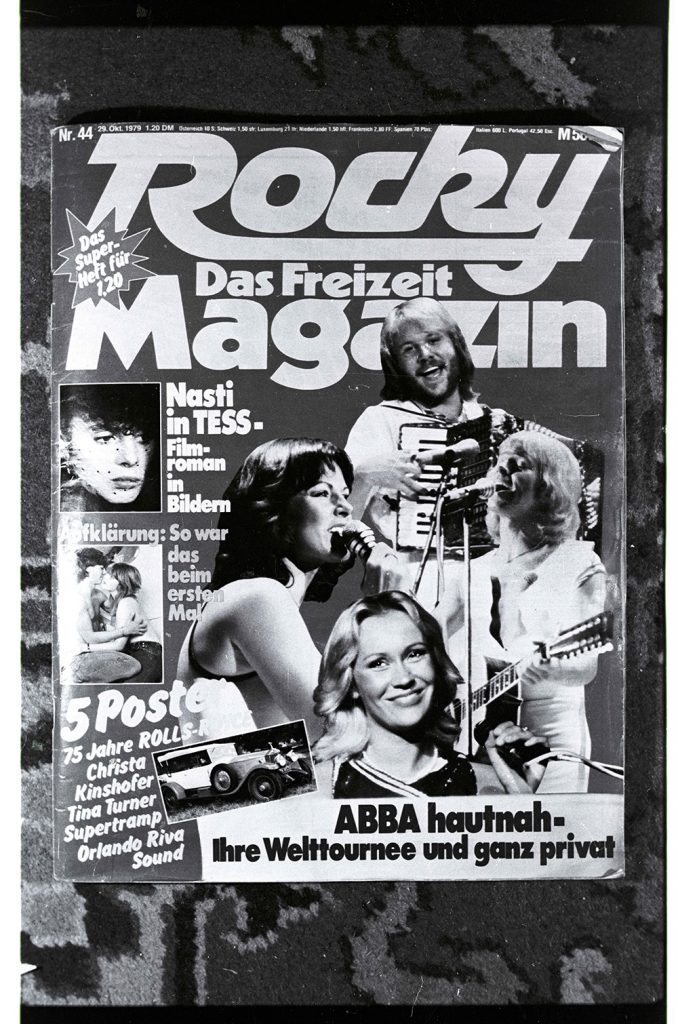
It is especially these album conversations that reveal what reached beyond the photos themselves in the private photography of East Germany between 1980 and 2000. In these talks, private photography appears as a practice that creates and stabilises social and biographical relationships. The presence of a camera could help to create moments during a walk, for example, that were worthy of a picture – even if it’s only standing together at a railing or when a swan comes swimming to the water’s edge. In the album the walk could be turned into a story, and the recurrent viewing together of the album (or an evening of watching slides) could lead to reinforcing the story and passing it on. Whether the photos were composed in an original way or unfocused or blurred was not important for this purpose – they, too, could find their way into the album or the box of pictures, even if their aesthetic qualities were not apparent to outsiders. The decisive factor was only whether and which photos could or should be part of whichever practices.
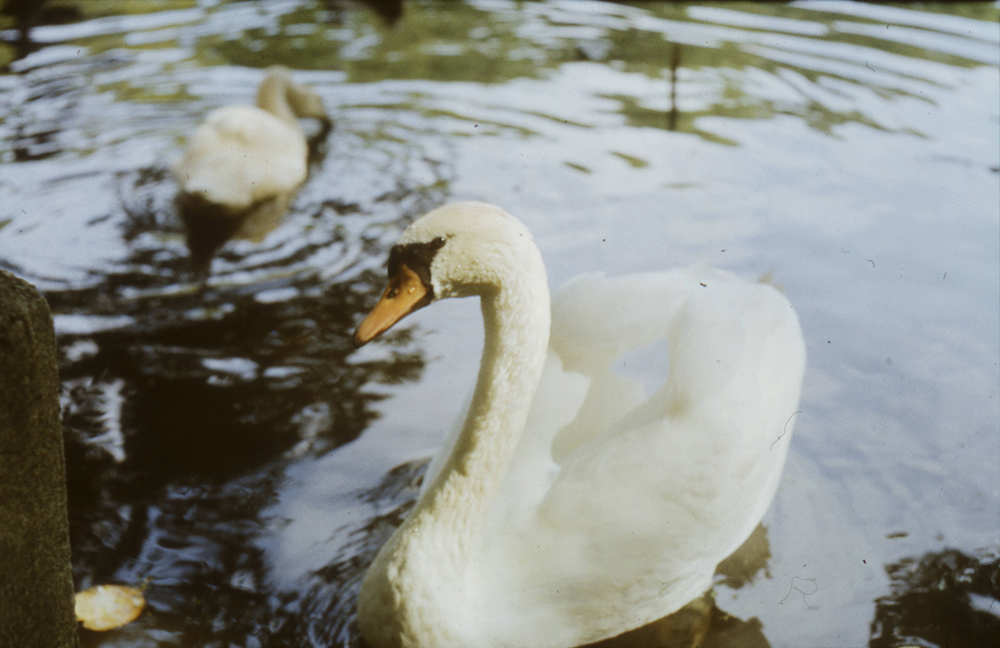
The motifs of private photography in East Germany between 1980 and 2000 may often appear to be stereotypical (precisely, by the way, like the photos in the western half of the country during that period), but the practices connected with them were not. In our interviews we spoke with people who had filled many more than 100 albums with their pictures; others had shot two or three dozen rolls of film at the same time. We saw albums that had been carefully prepared and put together by a professional bookbinder; other people we spoke with showed us ready-made paste-in albums or had sorted out the photos in a box without an album. The albums were often the result of complex collaborations – in some cases there was a strict separation between photo production and album production, while in others both activities were done by the same person, and there were also albums where the pictures came from different sources. For not a few of the people we interviewed, album-making was an activity for the winter months, while others put them together successively as soon as the photos were available. Albums could be put together chronologically or according to topics, and they frequently started with the birth of a child and meticulously followed every stage of growing up – whereby few families made the same effort for the second child, not to speak of the third one. Some of the albums were constantly updated to the present, taken apart, rearranged, and completed, while others were put away in the cupboard and only taken out and viewed again in connection with our project.
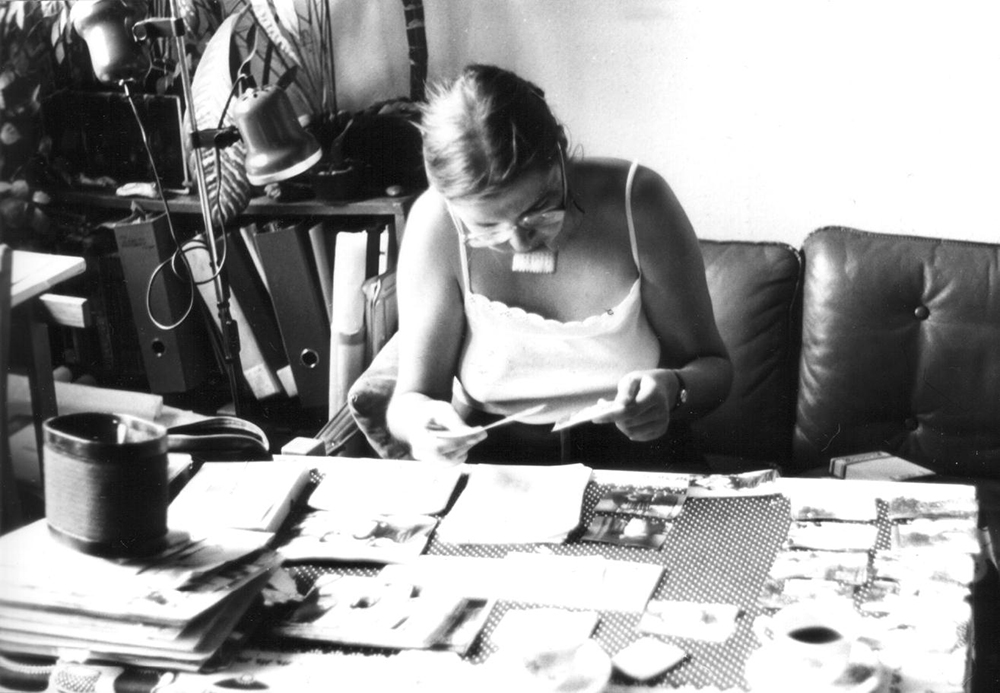
In the course of the project we have looked through hundreds of albums and viewed thousands of photos. That might sound like a lot, but it is only a tiny fraction of the private photographs taken during those two decades, arranged in albums, and repeatedly viewed. Moreover, whole groups of the population who had photographed in East Germany could not be taken into account in our interviews – we did not speak with former contract workers, for example, not with the so-called victims of reunification, not with members of the ruling elite or the Ministry for State Security. Our project is thus above all a beginning that we and others can continue with new questions and thoughts – not least of all using the donations of photos given to us and to the DHM in the course of the project. And the further evaluation of the albums and talks has already begun – the research exhibition of the Reinbeckhallen Foundation, “… someone always took photos …”, invites visitors to examine the results of the project. The work was accompanied by two seminars at the Humboldt University, whose participants have published a glossary.